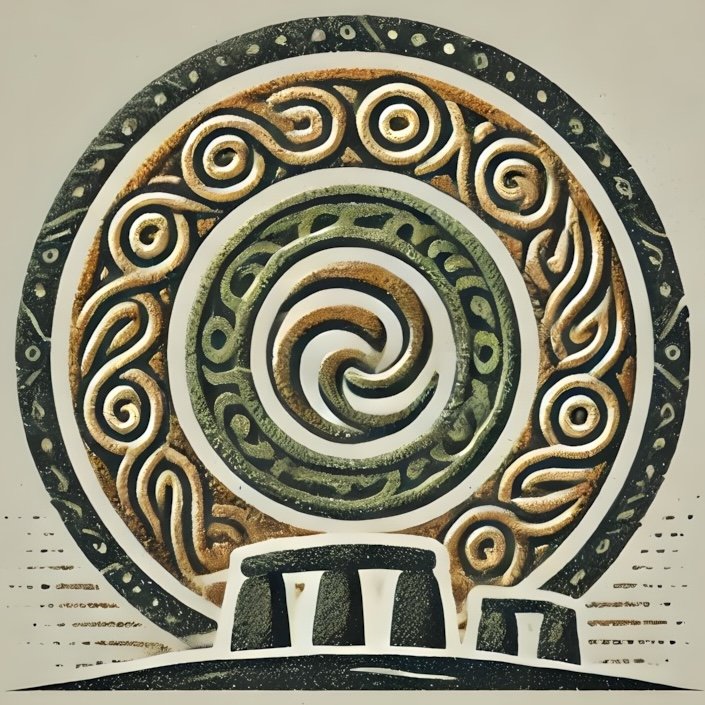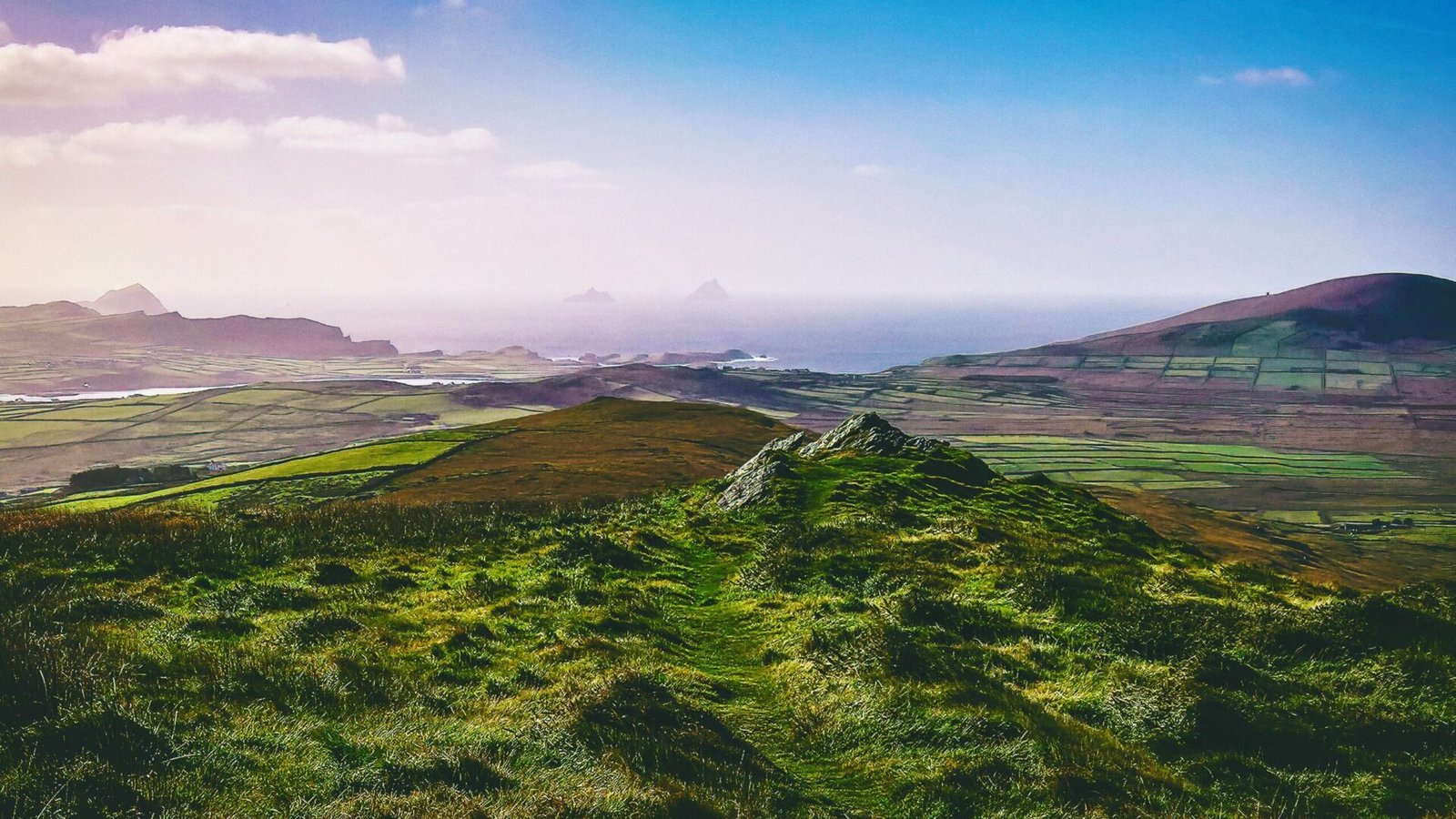Introduction to the Mesolithic Era
The Mesolithic Era, spanning approximately from 8000 to 4000 BCE, marks a transformative period in Irish prehistory. This epoch, often referred to as the Middle Stone Age, is characterized by the transition from the nomadic lifestyles of hunter-gatherers to more settled communities that began to explore agriculture. The landscape of Ireland during this time was dramatically different, shaped by the retreating glaciers of the last Ice Age, which created a rich tapestry of forests, rivers, and wetlands. This environment offered abundant resources, making it an ideal habitat for the first peoples who arrived on the island.
The First Peoples of Ireland
The first inhabitants of Ireland are believed to have arrived around 8000 BCE, likely crossing from Britain or continental Europe as the ice sheets receded. These early settlers were part of a broader migration of Mesolithic hunter-gatherers who spread across Europe. They were skilled in the use of flint tools and had a deep understanding of their environment, which they relied upon for survival. Evidence suggests that these first peoples were not a homogenous group; rather, they consisted of various tribes with distinct cultural practices and traditions.
Lifestyle and Subsistence
The lifestyle of the Mesolithic peoples was intricately connected to the natural world. They were primarily hunter-gatherers, relying on the rich resources of the land and sea. Their diet included wild game such as deer, boar, and smaller mammals, alongside a variety of foraged foods like nuts, berries, and edible plants. Fishing also played a significant role, with rivers and coastal areas providing an abundance of fish and shellfish.
Seasonal mobility was key to their survival; groups would move to different locations throughout the year to exploit various resources. Evidence of temporary campsites, often located near rivers or lakes, indicates that these early inhabitants had a sophisticated understanding of their environment and its seasonal cycles. They constructed simple structures using natural materials, which provided shelter from the elements while allowing them to remain in close contact with their surroundings.
Societal Structure
While the Mesolithic peoples of Ireland were primarily organized into small, kin-based groups, evidence suggests that they may have had complex social structures. These groups likely operated on a system of cooperation and mutual support, essential for survival in a challenging environment. The sharing of resources, knowledge, and skills would have been critical, fostering strong community ties.
Archaeological findings, such as burial sites and ceremonial artifacts, hint at the existence of social hierarchies or leadership roles within these groups. The presence of grave goods in burial sites suggests that certain individuals may have held special status, possibly indicating a form of early leadership or shamanistic roles within the community. This complexity hints at the beginnings of social stratification, which would become more pronounced in later periods.
Environmental Context
The environment of Mesolithic Ireland was a lush and diverse landscape, shaped by the climatic changes following the last Ice Age. As the glaciers melted, the land transformed into a mosaic of forests, wetlands, and grasslands, teeming with wildlife. The rich biodiversity provided ample resources for the first peoples, who adapted their lifestyles to the changing environment.
Forests dominated the landscape, primarily composed of birch, oak, and hazel trees. These woodlands offered shelter, food, and materials for tool-making and construction. The wetlands and rivers were vital for fishing and gathering wild plants, while the coastal areas provided access to marine resources. The interplay between these various ecosystems created a dynamic environment that shaped the lives of the early inhabitants.
Archaeological Evidence
Archaeological evidence from the Mesolithic era in Ireland is both fascinating and revealing. Key sites such as Mount Sandel in County Londonderry and the Lough Boora site in County Offaly have provided invaluable insights into the lives of these early peoples. Excavations at Mount Sandel have uncovered evidence of circular wooden structures, hearths, and a wealth of flint tools, indicating a well-established settlement.
Moreover, the discovery of human remains and burial sites, such as those at the Cavan Monaghan area, has shed light on the rituals and beliefs of the Mesolithic peoples. The presence of grave goods, including tools and ornaments, suggests that they held significant cultural and spiritual beliefs regarding life and death. These findings contribute to our understanding of the social and cultural practices of the first peoples of Ireland.
Connection to Irish Mythology
The legacy of the Mesolithic peoples extends beyond archaeology; it is woven into the fabric of Irish mythology. Many of the myths and legends that permeate Irish culture today can trace their roots back to these early inhabitants. The connection between the landscape and mythology is profound, with many sites linked to ancient stories and deities.
For instance, the ancient tales of the Tuatha Dé Danann, a mythical race often associated with the early peoples of Ireland, echo the themes of nature and the land that were so central to the Mesolithic lifestyle. The reverence for the natural world, evident in both archaeological findings and mythological narratives, underscores the deep connection the first peoples had with their environment.
Sites such as the Hill of Tara and the Boyne Valley, rich in archaeological significance, are also steeped in myth and legend. These locations serve as a bridge between the tangible evidence of the past and the rich tapestry of stories that have been passed down through generations, illustrating the enduring legacy of the first peoples.
Key Sites to Visit
For those interested in exploring the legacy of the first peoples of Ireland, several key sites offer a glimpse into the Mesolithic era:
1. Mount Sandel, County Londonderry: One of the earliest known Mesolithic sites in Ireland, Mount Sandel features evidence of settlement and tool-making.
2. Lough Boora, County Offaly: This site provides insights into the lifestyles of Mesolithic peoples, with evidence of habitation and resource use.
3. The Boyne Valley, County Meath: Rich in archaeological sites, this area is also steeped in mythology, making it a perfect destination for those interested in the intersection of history and legend.
4. The Hill of Tara, County Meath: A site of great historical and mythological significance, Tara is linked to ancient kings and the Tuatha Dé Danann, providing a deeper understanding of Ireland’s past.
5. The Cavan Monaghan area: Known for its burial sites and grave goods, this region offers a unique perspective on the spiritual beliefs of the Mesolithic peoples.
By visiting these sites, one can not only appreciate the archaeological significance but also connect with the rich mythology that continues to shape Irish culture today.

